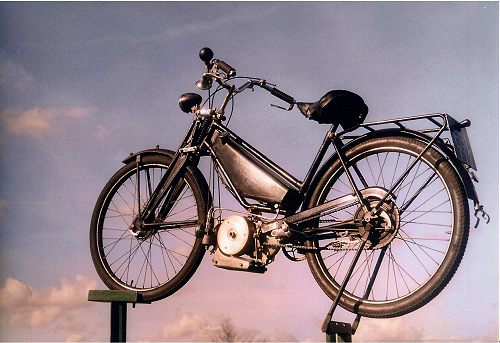
The Aberdale Cycle Co. was founded in 1919 as a family concern, with Joseph Levy joining his father in the business from the age of 14, and graduating within a couple of years to being ‘on the road’ selling their bicycles from a wheelbarrow! Brother Leslie also followed into the growing business, while Joe had progressed to sales manager by age 23. The developing trade necessitated a move in 1934, as the concern transferred from its first location, expanding to a new site built at Bridport Road, Edmonton, North London, with the factory described as "a modern plant, mass producing cheap bicycles for the economy market".
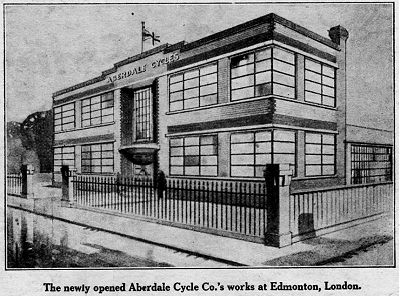
Lately based at Chadwell Heath in Essex, Bown Ltd. was acquired by Aberdale in the mid 1930s, and W.A.R.Bown retained with a seat on the board in a technical role, allowing the Levy brothers to concentrate on management of the commercial side of the business. It was an odd and unlikely marriage since the Aberdale Company was directed into high volume budget product, while Bown had evolved toward crafted bespoke quality engineering. The contrasting personalities actually seemed to function well, even though—from some accounts—it had some fractious moments!
Joe Levy took over as managing director in 1941, and during World War II, the Aberdale plant was turned over to production of war materials, including the building of a small generating engine set for use on aeroplanes.
With the return to peace in 1945 came a renewed demand for economic personal motorised transport - and now the autocycle was poised for its big moment! As other cycle manufacturers successfully returned to the market with their pre-war autocycle models, the shrewd Levy brothers saw new opportunities opening. Designed by W.A.R.Bown, and powered by the Villiers Junior de Luxe motor, the Aberdale autocycle appeared out of the blue, and was first reviewed by Motor Cycling on 6 March 1947, shortly followed by the appointment of Claude Rye Ltd of Fulham Road, SW6, as main agents.
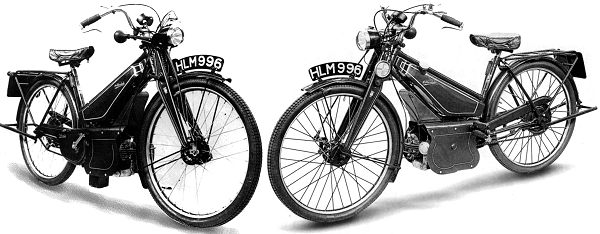
This illustrated development machine, HLM 996, appeared generally typical of other autocycles of the period, though a little more luxuriously finished and better appointed. Girder sprung Webb forks, chain guards on both drive and pedal sides, a stylishly crafted ‘nose’ feature to the petrol tank, sprung pedal chain tensioner mechanism, and full engine shielding. The standard black and gold lined paintwork was a popular scheme of the time, and displayed with further accessories of a custom fitted tool bag beneath the petrol tank, and Smiths gear driven speedometer set, Aberdale appeared to be positioning itself toward the quality end of the market, though production machines were delivered ‘bare’ without engine shields, as also illustrated in the supporting publicity leaflet. Since the cheaper and more basic machines seemed to be attracting better sales at this time, a conclusion could be that these engine panels were soon deleted or re-designated as accessories.
Story has it that one model autocycle was produced for approval to the Royal Mail, smartly finished in bright Post Office Red and with gold coach lines. Though this machine was never actually taken up by the mail service, Aberdale thought it was so eye-catching, that they issued a ‘limited edition’ of bikes trimmed in red.
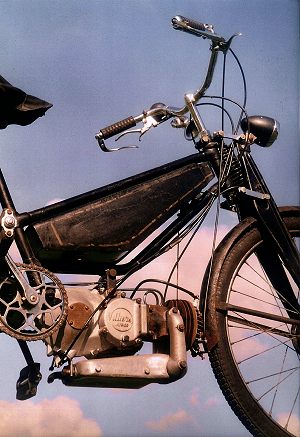
Our test machine for today is still finished in ‘standard’ black livery with gold coach lining, and carries frame number AAU984. Firstly obvious is that the bike has no engine side panels, and though the alloy silencer box is tapped and plugged with blanking bolts to allow fitment of the panels, there are no obvious upper mounting points to suggest any were ever fitted. The drive chain guard is non-original, the pedal chain guard is missing and the pedal chain tensioner has obviously been subject to some ‘improvisation’. The seat and headlamp also appear to have been changed.
Apart from these items and a few minor details, the main machine appears largely untouched and correct. The characteristic ‘nose’ petrol tank later carried over to the Bown 2F Roadster, while that distinctive curling fuel line is very correctly unique to the Aberdale. The original chrome rims have their spoke ridge blacked over, and that rear carrier notably has more fixing points to secure the mudguard than any other autocycle, the result being a particularly rigid assembly. The rear stand latch features a clip to catch the stand in place, then a lever lock for double security. All typical attention to detail that one comes to expect from W.A.R.Bown’s critical engineering eye!
Starting is very conventional autocycle practice, using the rod operated shutter choke, and no requirement to reach down to the carb flood button. The angled tailpipe on the expansion box blows a stream of blue smoke across the bike beneath the engine, so as the clouds start rising around us in the still air, we decide it’s time to hastily make away down the road. With a bit of clutch feeding, the Villiers engine produces enough steam for an unassisted take-off, but a little pedal work is kinder to the motor and makes this phase rather more practical to accelerate when using in impatient modern traffic.
The frame construction is obviously good since it pilots a confident course through corners then, as the motor warms and works up to speed, the shortcomings also become more obvious! The Webb forks seem rather stiff and oversprung, with very little movement occurring to smooth the ride. This delivers a constant battering to the pilot, who also suffers from bouncing of the rigid tail as lack of capability in the tyres or seat fail to absorb much transmission from the road surface. Compounding this, the Junior de Luxe motor seems particularly vibratey and clonky, and having ridden other autocycles over this very same test route, I can assure you that this example is particularly challenging to the rider’s stamina and durability.
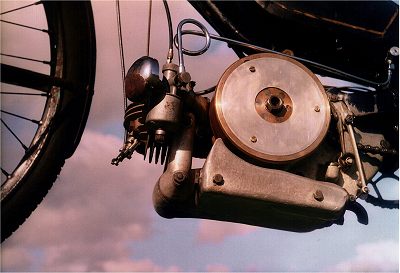
General cruising speed paced 25–30mph on the flat, with a best downhill at 34mph. Generally, it proved more tolerable to run slower; the trouble with this was that it meant you’d have to suffer longer on the bike to reach your destination! This Aberdale was more assault course than autocycle!
The brakes are typically poor and cumbersome to operate with the inverted lever controls, while the lights were remarkably bright and prone to flicker in pulses at low revs. The conclusion being that it could well be fitted with very low wattage bulbs, and that using at even normal pace with the lights on would probably lead to meltdown of the filaments. Best to just turn them back off and stay well away from the switch!
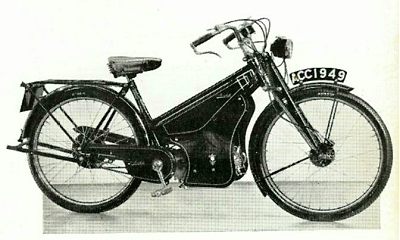
The original registration number of our feature machine would appear to indicate issue around April 1950, so a rather belated sale, since the Aberdale had become obsolete well before this time. Autocycle technology was moving on rapidly after the war, with Villiers announcing the 2F replacement for the Junior de Luxe to its customers late in 1948, and Aberdale was right there with Francis-Barnett, New Hudson, Norman and Sun, in showing its new 2F powered prototype at the Earls Court Show in November. Price listings at this show presented the Junior de Luxe Aberdale as the cheapest autocycle at £50–9s–4d, the nearest competitor being New Hudson’s outgoing Junior de Luxe model at £53–6s–10d. However, while many of the competitors were delivering their new 2F machines for sale in the 1949 season—the new Aberdale was nowhere to be seen! Instead, the old model was called upon to soldier on for another year, as further publicity pictures appeared of another engine-panelled variant Junior de Luxe machine: ACC1949.
The first clue to this puzzle appeared as a short passage in the Rhonda Leader newspaper of 29 January 1949, about ‘The establishment of a cycle manufacturing concern at one of the two unoccupied factories on the Partridge tip site, Llwynypia’. Aberdale’s production of its latest autocycle had become distracted by the setting up of this new plant under the Labour government’s ‘Advanced Factory Scheme’, so the old Junior de Luxe machine continued to be assembled back at Edmonton while the Tonypandy factory was being equipped to supply the new 2F model to market for the 1950 season.
The new South Wales plant came to be titled as the Bown Cycle Co Ltd, and when the 2F autocycle eventually re-appeared in a review by The Motor Cycle of 16 February1950, it had acquired a set of engine covering side panels, the right-hand tailpipe exhaust had become a silencer box between the lower frame rails, and it was now branded as the new Bown Auto-Roadster!
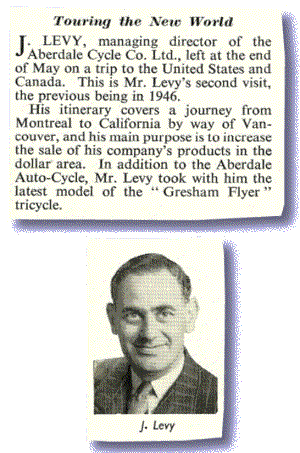
In an effort at increasing export sales to Canada and North America, Joe Levy had taken the Aberdale Autocycle, along with a Gresham Flyer tricycle, for show at Montreal, Vancouver, and California in June 1948. How successful this could have been, may only be judged from the low frame number serialisations. Listed for three years, the Aberdale Junior de Luxe autocycle was finally withdrawn at the end of the 1949 sales season with certainly fewer than 2,000 examples having been built, and frame number AAU1328 being the highest serial so far noted in machine register records. Bown-branded autocycles seemed to continue the numeration series with a BAU prefix.
Tube Investments notified acquisition of the Aberdale Cycle Co Ltd in October 1954 and its product licences progressively became absorbed as part of the British Cycle Corporation portfolio. Badly affected by the dramatic decline of the autocycle market in the early 1950s, the Bown plant in Wales closed over the winter of 1954–55, but Aberdale returned again at the Earls Court Show in November 1955, with a factored Zweirad Union moped under the Bown brand, assembled back at Edmonton, London.
The last Bown mopeds were built out during 1958, though continued on listings into 1959 to clear remaining stocks.
The Aberdale directorships were formally relinquished in January of 1959, and on 27 February it was advised ‘The business of the Aberdale Cycle Co. Ltd. has transferred to Britannia Works, Handsworth, Birmingham 21, as part of the new buildings of the British Cycle Corporation’ (sharing the address with Hercules and James Cycles at the former site of Brampton Fittings Ltd.).
This wasn’t, however, the end of the road for the partnership of the Levy brothers and W.A.R.Bown who, along with several of their former colleagues from Aberdale, registered The Trusty Manufacturing Co Ltd at Angel Factory Colony, Edmonton, London N18, making the Trusty Pavemaster children’s scooter and a range of juvenile Trusty Pavement Cycles.

Next: A hot haze shimmers on the road ahead as we ride north on the M1. Heat means time is advancing again. When we arrive at Nottingham, it is April 1964, and Britain’s most popular moped is just about to get even better.
This article appeared in the October 2007 Iceni CAM Magazine.
[Text & photographs © M Daniels]

